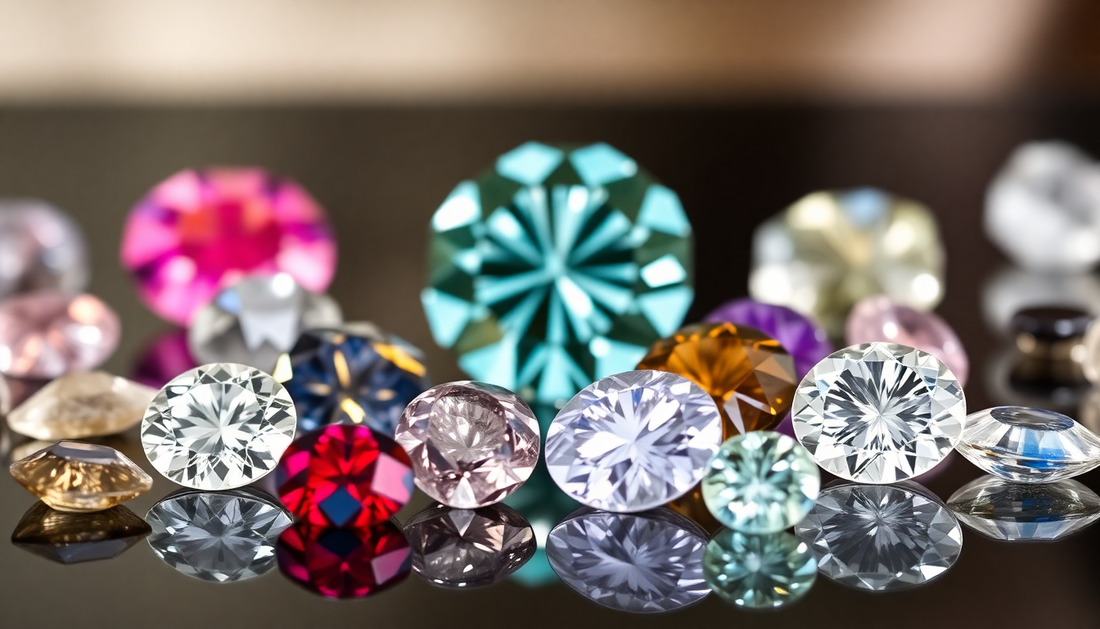
Understanding Chatoyance: The Unique Optical Phenomenon in Gemstones That Captivates Collectors
Share
What is Chatoyance?
Chatoyance, commonly referred to as the 'cat's eye effect', is a captivating optical phenomenon seen in certain gemstones. This effect is characterized by a narrow band of reflected light that moves across the surface of the stone, resembling the slit pupil of a cat’s eye. This enchanting display is a result of the unique internal structure of the gemstone, often caused by parallel inclusions within the crystal.
The Science Behind Chatoyance
The chatoyant effect occurs when light interacts with specific inclusions within the gemstone. These inclusions can be:
- Silk-like fibers: Fine, needle-like rutile inclusions align themselves in a parallel arrangement within the gemstone.
- Other minerals: Various minerals present in the stone can also contribute to this optical illusion, enhancing the chatoyant effect.
When light hits these inclusions, it reflects and creates the distinct band of light that moves as the stone is turned. The quality of chatoyance can vary greatly among gemstones, impacting their desirability and value. Gemstones with a more pronounced and well-defined chatoyant effect tend to be more valuable, drawing the attention of collectors and jewelry enthusiasts alike.
Gemstones That Exhibit Chatoyance
Several gemstones exhibit this remarkable phenomenon, making them highly sought after by collectors. Some notable examples include:
- Chrysoberyl: Perhaps the most famous chatoyant gemstone, known for its stunning cat's eye effect. Natural cat's eye chrysoberyl is particularly rare and can command high prices in the market.
- Tourmaline: Certain varieties, such as cat's eye tourmaline, display a beautiful chatoyance that can vary in color from green to pink, making them unique and desirable.
- Quartz: Known as cat's eye quartz, this gem can showcase an impressive chatoyant effect. The inclusions in quartz can create a striking line of light that enhances its visual appeal.
- Jadeite: Some jadeite stones exhibit a subtle chatoyance that adds to their allure, making them more valuable among collectors.
- Spinel: Rarely, spinel can also show a chatoyant effect, particularly when it contains specific needle-like inclusions.
The Allure of Chatoyant Gemstones
Collectors and gem enthusiasts are drawn to chatoyant stones not just for their beauty but also for their rarity. The unique optical phenomenon of chatoyance adds a layer of intrigue and fascination to these gemstones. Here are some reasons why chatoyant gemstones are so alluring:
- Unique Aesthetics: The shifting band of light creates a dynamic visual effect that changes as the viewer shifts their perspective, making each piece of jewelry truly one-of-a-kind.
- Symbolism: In many cultures, the cat's eye effect is considered to bring good fortune and protection. This has added to the popularity of cat's eye gemstones throughout history.
- Investment Potential: Given their rarity and the specialized nature of their optical phenomenon, chatoyant gemstones can be a wise investment. Their value is likely to appreciate over time, especially for high-quality specimens.
How to Identify Chatoyant Gemstones
Identifying chatoyant gemstones involves looking for specific characteristics that denote the presence of the chatoyant effect. Here are some tips on how to identify these unique stones:
- Look for the Light Band: The most obvious indicator of chatoyance is the presence of a distinct light band that moves across the surface of the gemstone when it is rotated.
- Examine the Inclusions: Many chatoyant gemstones contain inclusions. Use a loupe or magnifying glass to inspect the internal structure of the gem, looking for parallel needle-like inclusions.
- Check for Color Variations: Some chatoyant stones display varying colors that can enhance their appearance. This is particularly noticeable in stones like tourmaline and chrysoberyl.
- Consult a Gemologist: If you’re unsure about the authenticity or quality of a chatoyant gemstone, consulting a certified gemologist can provide clarity and assurance.
The Market for Chatoyant Gemstones
The market for chatoyant gemstones is vibrant and continually evolving. Collectors, jewelers, and investors alike are keen on acquiring these unique stones. Factors that influence the market include:
- Rarity: The rarity of specific chatoyant gemstones, such as natural cat's eye chrysoberyl, can drive prices considerably higher than standard gemstones.
- Quality: The quality of the chatoyance, clarity of the stone, and overall craftsmanship in the cutting and polishing process can significantly affect market value.
- Trends: Current trends in jewelry design and gemstone collections can impact the popularity and desirability of chatoyant gemstones.
Care and Maintenance of Chatoyant Gemstones
To preserve the beauty and integrity of chatoyant gemstones, proper care is essential. Here are some maintenance tips:
- Cleaning: Clean your gemstones gently with warm soapy water and a soft cloth. Avoid harsh chemicals or ultrasonic cleaners that can damage the stone.
- Storage: Store chatoyant gemstones separately to prevent scratching. Use a soft pouch or a dedicated jewelry box.
- Regular Inspection: Periodically inspect your gemstones for any signs of damage or wear, particularly if they are set in jewelry.
Conclusion
Understanding chatoyance is essential for anyone interested in gemstones, whether you are a collector, a jeweler, or simply a lover of unique natural beauty. The mesmerizing optical phenomenon not only enhances the aesthetic appeal of certain stones but also adds an element of intrigue and rarity that captivates collectors worldwide. By recognizing the characteristics, market trends, and care needed for these gemstones, you can truly appreciate the enchanting world of chatoyant gemstones.